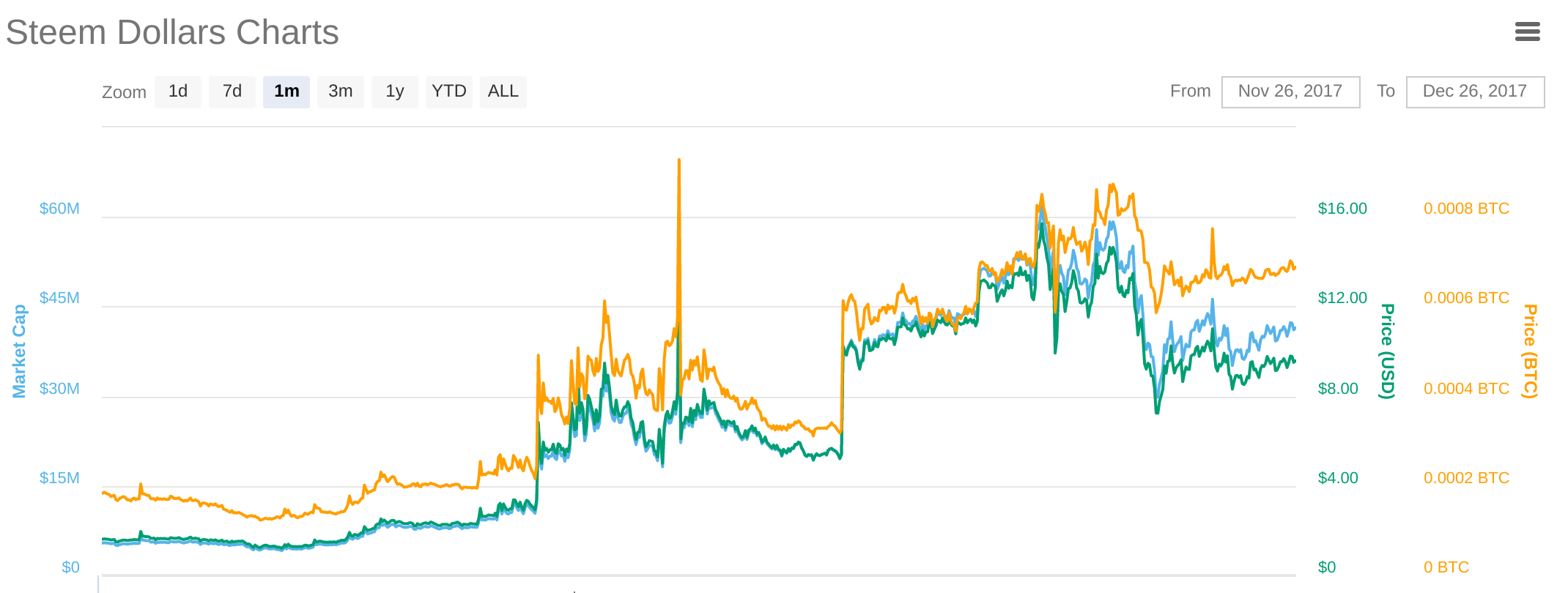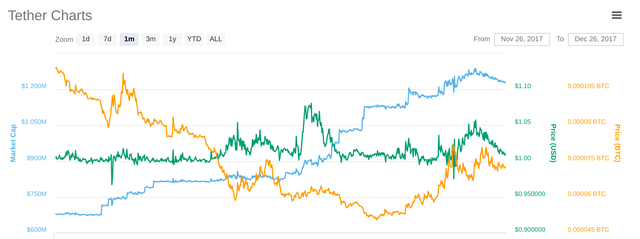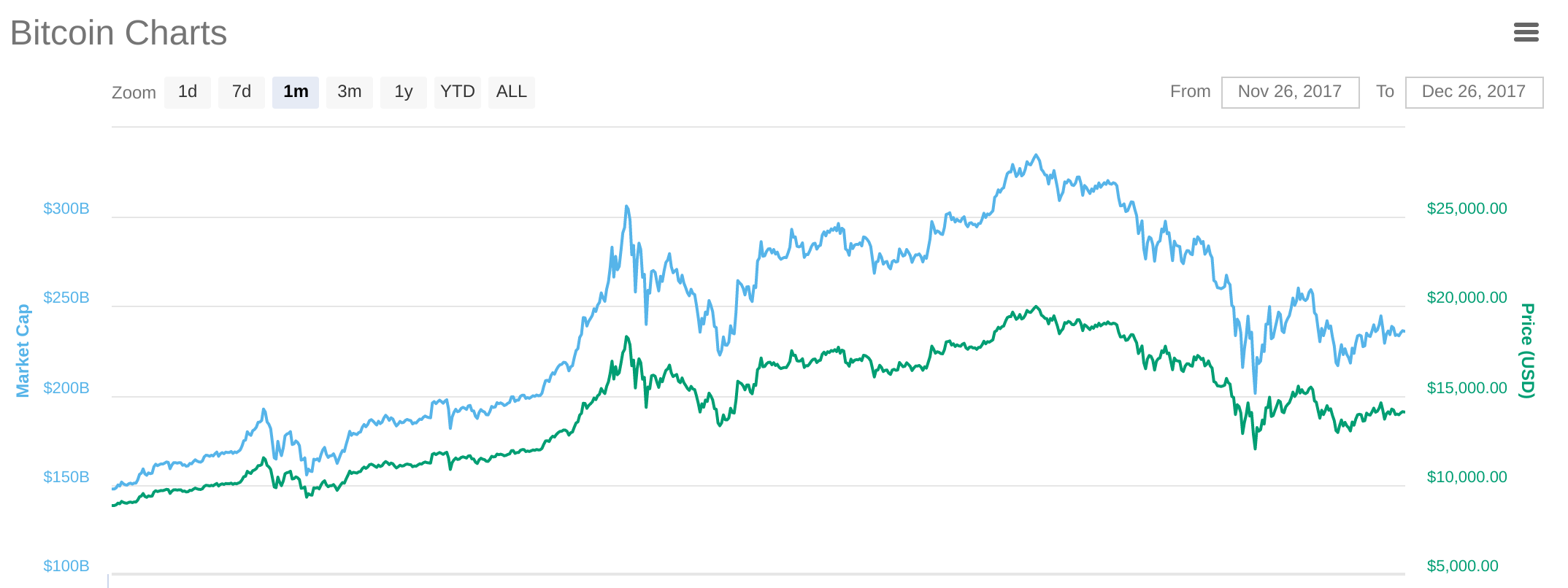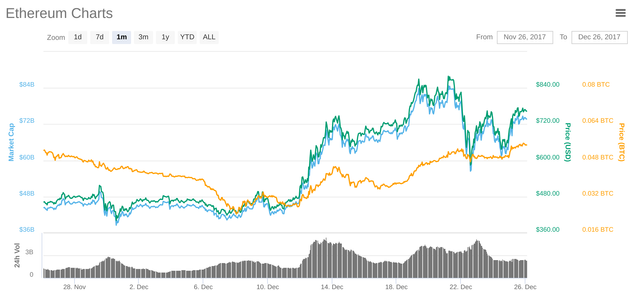$1 for 1 SBD is Normal. $9 for 1 SBD is Not Normal. About Pegged Currencies
Steem Dollars (SBD) Followed Most Crypto Currencies
The price of Steem Dollars (SBD) at the time of writing is $9.70 on coinmarketcap.com, up from about $1.30 on December 1st. This trend mirrors the steep increase in price of almost every other coin during the month of December as crypto currency lurches into the mainstream. The explosion of media coverage and popularity of crypto currencies unleashed a frenzy of new buyers who drove prices up, but SBD is not like other crypto currencies in how it handles price changes. Unlike other currencies, SBD is designed to regress to $1.
A Rising Tide Doesn't Float All Boats
Take, for example, the crypto currency Tether (USDT), which is currently $1.01. At the beginning of the month, Dec. 1st, the price was then too $1.01. Its price has remained flat despite its market cap doubling. Tether was designed to hold the same value at $1 USD and its protocol steadied the currency, only ranging in price from $.96 to $1.08 the entire month. This is in contrast to BitCoin (BTC) and Ether (ETH) which each had gains of about 60% in December.
SBD more like Tether than BTC or ETH
Like Tether, SBD was designed to have a steady value of roughly $1. When the value of SBD veers away from $1 then the protocol implements controlling influences until the price is back to $1. This makes SBD very different from other crypto currencies like BTC, ETH and notably Steem.
Why is Tether = $1, but SBD > $1?
Tether implements strong price controls that (among other means) utilize a large reserve of real USD, whereas SBD has no such reserve of USD backing. SBD price controls are limited to adjusting interest rates and changing payout rewards similar to some governmental fiat monetary policies. One can read about SBD price influences in the Steem white paper starting on page 11.
Examining Market Cap and Price
We can see the SBD price control effects in the following graph by noting how SBD market cap (blue) changes disproportionately to SBD price (green). As the protocol increases the amount of SBD in circulation as a response to the high value (>$1), the market cap line pulls away from the price line. At the end of the month we see the two lines coming apart more than they were earlier in the month.

(image from coinmarketcap.com)
We can see a more extreme example of market cap changing disproportionately to prices in the graph of Tether:

(image from coinmarketcap.com)
This is in contrast to the charts of BTC and ETH which have market caps that change almost exactly in proportion to price:


(images from coinmarketcap.com)
BTC and ETH protocols have negligibly increasing supply of currency that is independent of price that can cause slight disproportions in the market cap change vs. price, but this is nothing like the disproportion of SBD and the wild swings of Tether.
In Summary
SBD is designed to be worth roughly $1 and has a protocol pushing it towards that value, but lately market factors have pushed harder and moved SBD price away from $1. If the Steem monetary controls work as intended then SBD price will trend towards to $1 more than other currencies. The push towards $1 might continue to be overpowered by market forces but protocol will persist in trying to devalue the currency if the price is over $1.